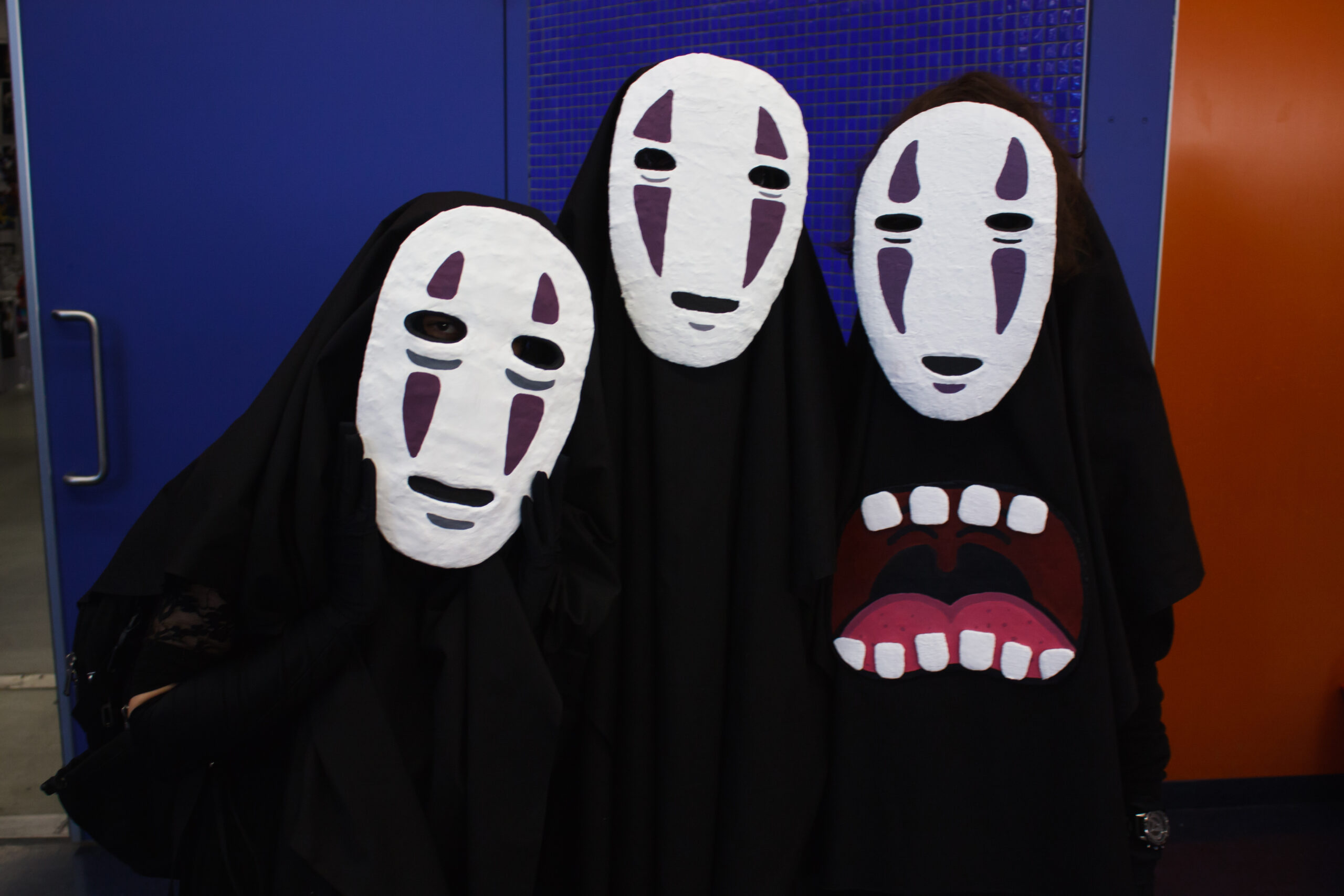Studio Ghibli, the renowned Japanese animation studio co-founded by Hayao Miyazaki and Isao Takahata, has captivated audiences worldwide with its visually stunning and thematically rich films. In recent years, they have decided to take some of these stories to the stage.
Following the success of the adaptation of My Neighbour Totoro at the Barbican, the Japanese-language stage adaptation of Spirited Away (Studio Ghibli’s Academy Award-winning animated film) opened at the London Coliseum with English surtitles (translation above a stage). Previously, the opening run of the stage adaptation sold out in Tokyo in just four minutes. This marks the play’s first international tour, introducing Ghibli’s iconic narratives to global theatre audiences.
In Spirited Away, a young girl named Chihiro stumbles into the spirit realm when her parents are turned into pigs. Guided by the enigmatic Haku, Chihiro must work at the spirit bathhouse run by the formidable witch Yubaba to rescue her parents.
As a lifelong fan of Studio Ghibli, I marvelled at how closely the play follows the film’s plot. Using a revolving stage and moving doors, it perfectly captures a sense of awe and fantasy. Performed by a live orchestra, the use of the original film score by the talented composer Joe Hisaishi elevated the experience.
The play transports audiences into the fantastical realm of kami, which are sacred spirits embodying natural elements in Japanese Shintoism and folklore. Through exquisite costumes and traditional puppetry, various kami come alive with theatrical artistry, from the Oshira-sama (a giant white radish spirit) to Haku (a river spirit).
As Haku transforms into dragon form, the segmented serpent-like puppet is operated by several visible puppeteers and is represented by a kite version as he flies into the distance. Haku’s character is inspired by the Eastern dragon, a mythical creature that has power over water bodies. By depicting these mythical beings, Spirited Away pays homage to Japan’s animistic spiritual traditions and reinforces the idea of respecting and coexisting with nature.
For me, this production was elevated by its commitment to the film’s core themes – identity, greed and our relationship with the natural world.
There are two pivotal scenes in the stage play that remain with me. The first is the entrance of the Okusare-sama (the stink spirit) to the bathhouse. Through ingenious staging with shredded brown fabrics depicting its sludge-like form, the entire bathhouse recoils in disgust. However, Chihiro sees beyond the revolting exterior and detects a being in need.
What follows is a captivating scene as the bathhouse spirits, initially repulsed, unite through a choreographed sequence of fog and translucent plastics representing purifying waters. They dislodge the rubbish plaguing the stink spirit, including a bicycle, until it is restored to its original form – an ancient river spirit.
As a kite-like puppet of the river spirit flies towards the audience, we are left to ponder humanity’s degradation of nature and our collective responsibility for its restoration.
The second pivotal scene is the corruption of No-Face, a lonely spirit who follows Chihiro in the bathhouse. He is dressed in black robes and an expressionless mask. Hikaru Yamano’s depiction of No-Face, through eerily contorted dance movements capture the character’s loneliness and existential emptiness.
No-Face’s desperate attempts to fill this void through bath tokens and gold, after consuming a greedy frog spirit, spiral into a monstrous transformation. As he consumes more individuals, he is depicted as a writhing mass of actors cloaked in black. This haunting depiction is a commentary on the dangers of overconsumption and the loss of self.
Yet, Chihiro’s rejection of his gold leads to him reverting back to a calm state. The stage adaptation holds a mirror to our society’s insatiable appetite for more, challenging us to confront the erosion of our spiritual and environmental identities.
At its core, Spirited Away explores the journey of growing up and confronting inevitable changes. The audience witnesses witness Chihiro’s metamorphosis from a spoilt child to a courageous young woman, navigating a fantastical realm where many lose themselves to greed. Nevertheless, Chihiro’s moral compass remains unwavering.
Her compassion and sense of justice act as anchors to her true self, offering hope in a world that often prioritises material wealth over human decency. We face constant changes throughout our lives, which can be daunting. Spirited Away reminds us that we should not be frightened by change, but we should never lose sight of who we truly are.
In a world grappling with environmental challenges and the complexities of identity, Spirited Away’s stage adaptation stands as a poignant reminder of the transformative power of storytelling. As I exited the Coliseum, I felt a sense of optimism and wonder. Studio Ghibli’s magic had found a home on the western stage and had ignited a spark of hope – a reminder that even in the face of adversity, compassion, community, and a deep respect for nature can guide us toward a better future.
Lecturer in Environmental Management & Sustainability, University of Reading.
This article is republished from The Conversation under a Creative Commons license.

